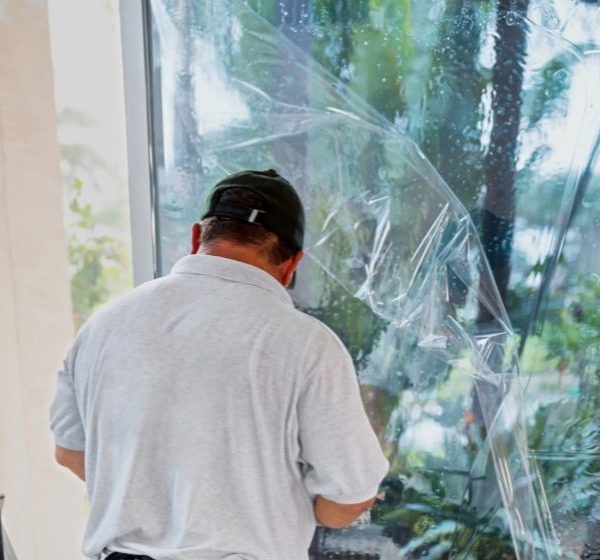The interplay of light and space is the quintessence of interior design. It’s a dance where illumination is directed, warm sunlight is appreciated and spaces are carved out, often through the clever manipulation of glass. Enter decorative glass tinting; an under-celebrated hero that brings depth, privacy, and efficiency to a space, all the while telling a silent story through intricate patterns and hues. In this guide, I’ll lead you through five remarkable ways to employ glass tinting—pushing boundaries and reimagining the possibilities of interior design.
Glass Tinting for Privacy
Privacy is a modern luxury, yet it’s often at odds with our innate desire for natural light and open spaces. Decorative glass tinting presents a compromise—a way to carve intimate pockets within open-plan living or create sanctuaries that feel neither cloistered nor exposed.
Seclusion with a Hint of Light
In bathrooms, consider deeply tinted glass that shields from view while allowing diffused light to elegantly flood through. It is this soft, filtered glow that transforms a bathroom into a spa-like retreat. Office spaces benefit from such privacy, too. Task areas using glass dividers with a faint tint, maintaining a sense of connectivity without distraction.
Shared Spaces with Subtle Screens
In communal areas, particularly in co-living environments, transparency is cherished, yet sometimes, division is necessary. A gradient tint can segment zones without creating ‘walls,’ ensuring that each zone retains a certain connection to the next, despite the visual cues to separate.
Aesthetics Through Innovative Glass Solutions
The pure aesthetic appeal of decorative glass tinting is undeniable. It’s an artful way to introduce texture and color into a design scheme—transforming the ordinary into the ornate.
Stained Glass Effects for Extravagance
For those who revel in the romanticism of historic design, stained glass provides a chimera of yesteryears. Modern interpretations allow the light to dance off richly-hued glass, casting intricate designs across floors and walls. It may find its niche in a grand entrance, a reading nook, or lighting features, bringing vibrant color into the room.
Frosty Whimsy and Custom Prints
Frosted designs, while practical for privacy, can also become a canvas for creativity. Imagine a bespoke ‘tree of life’ pattern adorning glass panels in your living space or graphics that tie in the branding of a commercial entity within its office setting. Such personalizations are more than aesthetics; they are statements of identity within a space.
Energy Efficiency through Glass Tinting
The green movement in architecture and design heralds a new era where every element within a space is tasked with contributing to overall energy efficiency. Glass tinting, in its role to regulate light and heat, is no longer merely an aesthetic tool but a pragmatic one.


Regulating Temperatures, Naturally
Tinted glass can remarkably reflect the sun’s heat in summer, keeping interiors cooler, and absorbing it in winter, contributing to passive solar heating. This not only reduces the load on heating and cooling systems but also creates a more comfortable environment for occupants.
Cost-Effective Solutions for Sustainable Living
From residential projects to commercial ventures, the energy costs of air conditioning can be substantial. Tinted glass shifts the paradigm, offering a cost-effective alternative that doesn’t just reduce bills but also aligns with the broader sustainability goals of a project.
Creating Spatial Illusions with Glass Tinting
Have you ever walked into a room and felt, fleetingly perhaps, disoriented by an unexpected sense of space? Glass tinting has the power to play with these perceptions, expanding the small and beautifying the stark.
Maximizing Space with Light and Shade
Tinting that is strategically lighter at the top creates the illusion of a higher ceiling, much like the skies themselves. For inner spaces with limited access to exterior walls, a transom window with a light tint will invite the eye upwards, borrowing space from the heavens. This play with spatial perception can be a godsend in urban dwellings, where space is the ultimate luxury.
Incorporating Textures for Depth
The use of textured glass, particularly when tinted, can add layers of complexity to otherwise plain surfaces. It provides tactile interest in addition to visual, as light ripples and dances through. This extra dimension can imbue a story-like quality into the design, creating spaces that are not just passageways but experiences.
“According to research by MarketsandMarkets, the smart glass market is projected to grow from USD 3.8 billion in 2020 to USD 6.8 billion by 2025, at a CAGR of 12.1% during the forecast period. This surge is attributed to the increase in demand for smart glass in sectors such as automotive, architecture, and aviation, where energy efficiency and innovation are highly valued.”
Enhancing Safety and Security Through Innovative Glass Solutions
In the lament of shattered illusions, safety films and security tints emerge as steadfast protectors against dangers both natural and human-made. The unassuming nature of decorative tinting is the perfect vessel to reinforce without revealing, safeguarding without screaming ‘fortress.’
Anti-Shatter Films for Delicate Glass
The concept is simple—hold the shattered pieces of glass together should a high-velocity impact occur. Yet, the implications are far-reaching, especially when considering the expanses of glass often found in architecture today. Anti-shatter films are a preemptive measure that ensures, in the event of a break, the pieces remain loosely bound, held together by the strength of the film itself.
Security Tinting for Resolute Protection
More robust tinting solutions take security even further, turning glass into a barrier that is hard to breach. Such films are engineered to resist penetration, buying time in scenarios that demand it, and being the difference between a panic and a plan.
Conclusion
The interplay of light and form in modern interior design is a captivating symphony. Glass, as a versatile partner in this endeavor, offers a potent mix of aesthetic, practical, and eco-friendly solutions. In your next design project, consider the innovative ways glass can accentuate your vision. Imagine the narratives etched into the material and the efficiencies that allow the design to breathe and live. Balance privacy against the need for connection and energy consumption against comfort. Through subtle elegance, equilibrium becomes achievable.
Uncover the potential of glass by engaging with the material, testing its properties, and crafting a design story that is uniquely yours—where light and glass fuse into an experience. Create a space that engages, comforts, and inspires, not despite the material but through it.

